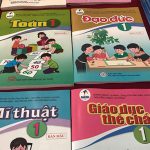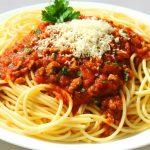Bộ đề thi giữa học kì 2 môn tiếng Anh lớp 9 năm 2018 – 2019, Mời quý thầy cô cùng tham khảo bộ đề thi giữa học kì 2 lớp 9 môn tiếng Anh. Thông qua bộ đề này sẽ giúp
Nhằm giúp các bạn học sinh ôn tập chuẩn bị cho bài kiểm tra giữa học kì 2 sắp tới, Tài Liệu Học Thi xin giới thiệu đến các bạn Bộ đề thi giữa học kì 2 môn tiếng Anh lớp 9 năm 2018 – 2019.
Đề thi có đáp án và lời giải chi tiết đi kèm sẽ là tài liệu tham khảo hữu ích dành cho các bạn học sinh lớp 9. Thông qua việc rèn luyện và làm quen với đề thi sẽ giúp các bạn củng cố lại kiến thức của môn tiếng Anh để tự tin bước vào kì thi giữa học kì 2 đạt kết quả cao nhất. Mời các bạn cùng tham khảo và tải tại đây.
Đề kiểm tra giữa học kì 2 lớp 9 môn tiếng Anh – Đề 1
I. Circle A, B, c, or D to indicate the best option for each blank in the sentences.
1. You can learn a lot about the local_____by talking to local people.
A. territory
B. area
C. land
D. nation
2. It’s good to have someone to_____you when you are visiting a new place.
A. lead
B.take
C. guide
D. bring
3. When you_____your destination, your tour guide will meet you at the airport.
A. arrive
B. reach
C. get
D. achieve
4. It can be quite busy here during the tourist ______.
A. season
B. phase
C. period
D. stage
5. Make sure you______a hotel before you come to our island, especially in the summer
A. book
B. keep
C. put
D. buy
6. Captain Cook discovered Australia on a______to the Pacific.
A. vacation
B. travel
C. cruise
D. voyage
7. Most tourist attractions in London charge an admission______.
A. fare
B. ticket
C. fee
D. pay
8. The hotel where we are______ is quite luxurious.
A. living
B. existing
C. remaining
D. staying
II. Read the paragraphs below and give the answer True/false
Japanese people are famous for their well-balanced and healthy diet. That is the main reason for their longevity.
A. Typically, a Japanese meal consists of rice, miso soup, the main dish(es) and pickles. Rice is the staple and plays a central part in people’s eating habits. Japanese rice is sticky and nutritious, so when combined with the main dishes and the soup, they make a complete meal. The portions of each dish are individually served.
B.The most important characteristic of their eating habits is they like raw food and do not use sauces with a strong flavour. Two typical examples are sashimi and sushi. The Japanese make simply by cutting fresh fish. Then they serve it with a dipping sauce made from soy sauce and spicy Japanese horseradish (wasabi). Sushi is similar. The cooked, vinegared rice can be combined with raw fish, prawn, avocado, cucumber or egg. Sushi is usually served with soy sauce and pickled ginger.
C. It is said that the Japanese eat with their eyes. Therefore, the arrangement of dishes is another significant feature of their eating habits. If you join a Japanese meal, you may be excited to see how the colorful dishes are arranged according to a traditional pattern. In addition, there are plates and bowls of different sizes and designs. They are carefully presented to match the food they carry.
1. A Japanese meal consists of rice, vegetable soup, the main dishes and soy sauce. …………..
2. Rice is the staple and plays a central part in people’s eating habits………………….
3. Japanese people like fresh food and do not use sauces with a strong flavour…………..
4. The two typical examples are sashimi and sushi. …………………….
5. The Japanese make sashimi simply by cutting fresh fish and then they serve it with fish sauce……….
6. Sushi is usually served with soy sauce and pickled ginger……………………..
7. The Japanese make Sushi by combining raw fish, prawn, avocado, cucumber or egg together. …………
III. Finish the second sentence so that it has the same meaning as the first one.
1. Minh doesn’t read many English books because he doesn’t have time.
– If __________________________________________________________________
2. I think you should spend more time improving your pronunciation.
If I …………………………………………………………………………………………………………………………….
3. Some people talk too loudly in public places. I don’t like them.
– I don’t like people who _________________________________________________
IV. Rearrange these following words to make a meaningful sentence.
4. If/ teenagers/ want/ stay/ healthy/ they/ should/ eat/ more/ fruits/ vegetables.
……………………………………………
5. If/ you/ continue/ eat/ too much/ fat food/ same time/ you/ may/ have/ stomachache.
……………………………………………
…….
Đề kiểm tra giữa học kì 2 lớp 9 môn tiếng Anh – Đề 2
I. Choose the best answer A, B, c, or D to complete the sentences.
1. Computers offer a much greater degree of _____in the way work can be organised.
A. flexible
B. flexibility
C. flexibly
D. inflexible
2. She spoke English with a(n)___________that I couldn’t understand.
A. accent
B. stress
C. intonation
D. tone
3. Louis is virtually bilingual___________ Dutch and German.
A. on
B. in
C. for
D. with
4. She ___________ up some Spanish when she was living in Mexico.
A. took
B. looked
C. picked
D. learnt
5. Teachers provide a model for children to ___________.
A. allow
B. behave
C. change
D. imitate
6. Peter can just about get___________ in German
A. up
B. down
C. out
D. by
7. Sound symbolism means that we often ________the meaning of word from its sounds.
A. guess
B. judge
C. imagine
D. expect
8. I can have a conversation in Italian, but I’m a___________ rusty.
A. bit
B. lot
C. very
D. too
9. Is English a(n) ___________ language in your country?
A. mother
B. official
C. living
D. old
10. He spoke a___________ of French that we found hard to understand.
A. slang
B. jargon
C. dialect
D. language
II. Give the correct form of the verbs in the brackets.
1. If you are kind to me, I (be) _______________ good to you.
2. He (come) _______________ if you waited.
3. If he (study) ________________ harder, he can pass an exam.
4. She may be late if she (not hurry) ________________.
III. Read the passage again and answer the questions, or choose the correct answers.
Son Doong cave has become more famous after the American Broadcasting Company (ABC) aired a live programme featuring its magnificence on ” Good Morning America” in May 2015.
Located in Quang Binh Province, Son Doong Cave was discovered by a local man named Ho Khanh in 1991, and became known internationally in 2009 thanks to British cavers, led by Howard Limbert. The cave was formed about 2 to 5 million years ago by river water eroding away the limestone underneath the mountain. It contains some of the tallest known stalagmites in the world – up to 70 metres tall.The cave is more than 200 metres wide, 150 metres high, and nearly 9 kilometres long, with caverns big enough to fit an entire street inside them. Son Doong Cave is recognised as the largest cave in the world by BCRA (British Cave Research Association) and selected as one of the most beautiful on earth by the BBC (British Broadcasting Corporation).
In August 2013, the first tourist group explored the cave on a guided tour. Permits are now required to access the cave and are made available on a limited basis. Only 500 permits were issued for the 2015 season, which runs from February to August. After August, heavy rains cause river levels to rise and make the cave largely inaccessible.
1. What happened in May 2015?
…………………………………………………
2. Was Son Doong Cave formed by river water throwing away the limestone underneath the mountain?
…………………………………………….
3. When can tourists explore the cave?
……………………………………………..
4. The word “inaccessible” in the passage probably means_____.
A. should not be accessed.
B. need to be careful .
C. cannot be reached .
D. may be flooded .
5. From the passage, we know that__________ .
A. there is a street inside Son Doong Cave
B. the cave is always covered with rain water
C. few tourists want to come to the cave
D. tourists need permission to explore the cave.
V. Finish the second sentence so that it has the same meaning as the first one.
1.why / the / he / That’s / reason / failed.
…………………………………………
2.here / We / the year/ died. / when / moved/ my uncle
………………………………………
3. to have/ If / want / good health, / you / you / the amount of salt / must reduce / in your food.
…………………………………………….
4. If / hungry, / is/ my brother /can / three bowls / eat/ he/ of rice.
……………………………………………..
5. If / I / this / may have / undercooked pork, / eat / I / a stomachache.
……………………………………………….
…..
Mời các bạn tải file tài liệu để xem thêm nội dung chi tiết











